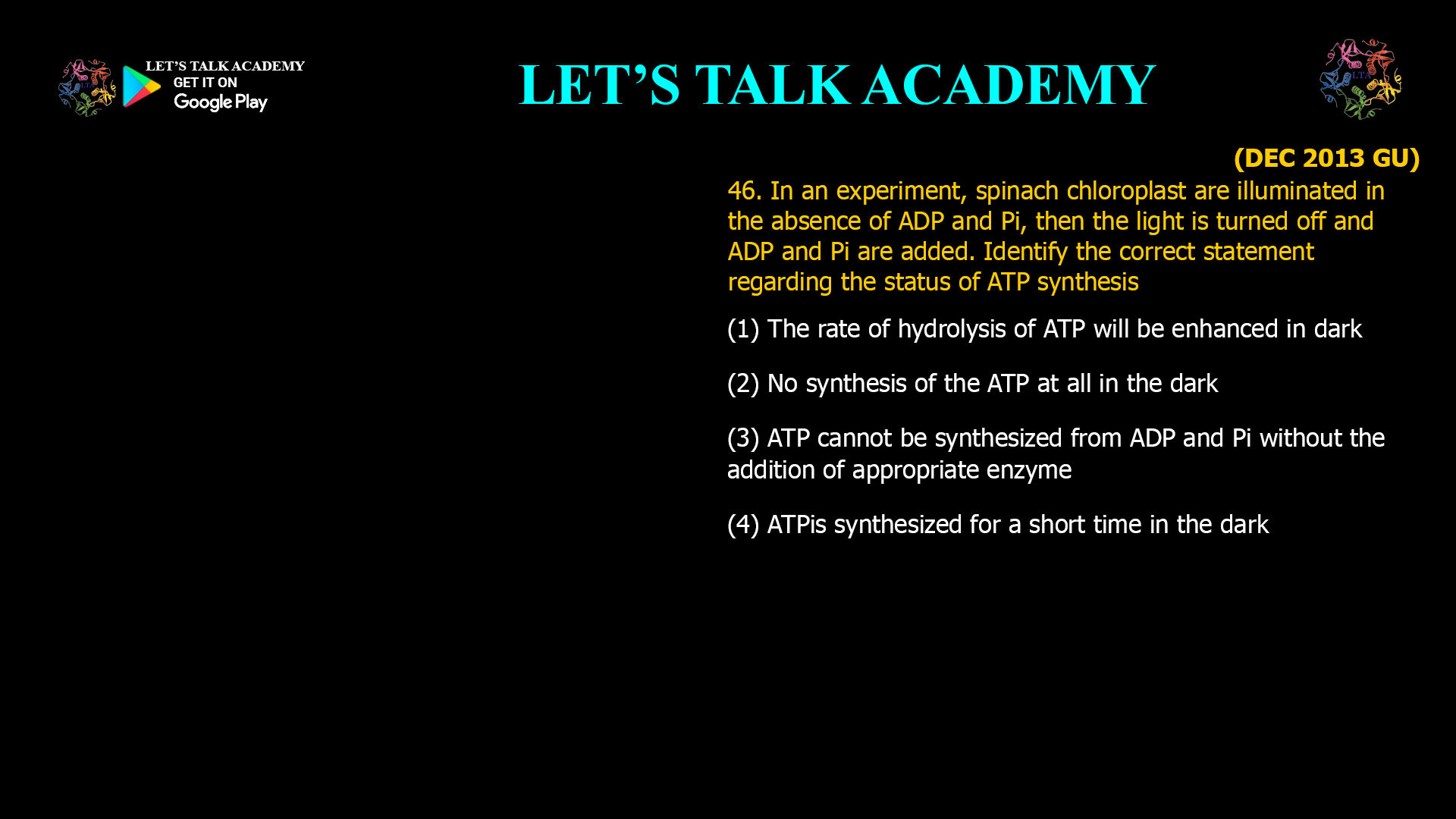46. In an experiment, spinach chloroplast are illuminated in the absence of ADP and Pi, then the light is turned off and ADP and Pi are added. Identify the correct statement regarding the status of ATP synthesis
(1) The rate of hydrolysis of ATP will be enhanced in dark
(2) No synthesis of the ATP at all in the dark
(3) ATP cannot be synthesized from ADP and Pi without the addition of appropriate enzyme
(4) ATP is synthesized for a short time in the dark
The correct statement is (4): ATP is synthesized for a short time in the dark.
When spinach chloroplasts are illuminated without ADP and Pi, a proton gradient and stored energy (pmf) accumulate in the thylakoid membrane. If light is then switched off and ADP/Pi are added, the stored gradient can briefly power ATP synthase, resulting in a short burst of ATP synthesis even in the dark. Once the gradient dissipates, ATP synthesis ceases until new light-dependent charge separation occurs.
ATP Synthesis in Chloroplasts: Light vs. Dark
Introduction
Key phrase: ATP synthesis chloroplast light dark ADP Pi proton gradient thylakoid membrane experiment
The production of ATP during photosynthesis is closely linked to the proton gradient generated by the light reactions. Under specific experimental conditions, ATP can briefly be synthesized in darkness if a ready-made gradient persists after previous illumination.
Explanation of Each Option
-
(1) The rate of hydrolysis of ATP will be enhanced in dark
-
Incorrect. ATP hydrolysis is not increased simply by darkness; ATP synthase’s ATPase activity is often downregulated in the dark to conserve ATP.
-
-
(2) No synthesis of ATP at all in the dark
-
Incorrect. In these experiments, some ATP is briefly made in the dark using the leftover gradient from illumination; ATP synthesis ceases once the gradient dissipates.
-
-
(3) ATP cannot be synthesized from ADP and Pi without the addition of appropriate enzyme
-
Incorrect. ATP synthase is present in chloroplasts; synthesis is dependent on the membrane, the enzyme, and the proton gradient, not on external enzyme addition.
-
-
(4) ATP is synthesized for a short time in the dark
-
Correct. The stored proton gradient after illumination powers ATP synthesis for a short period, supporting Mitchell’s chemiosmotic hypothesis.
-
Key Facts: Chloroplast ATP Synthesis Experiment
-
Storing a proton gradient with light and activating ATP synthase allows brief dark ATP production.
-
ATP synthesis stops once the gradient dissipates and cannot resume until new light energizes the system.



